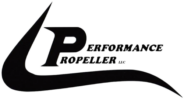Frequently Asked Questions
Why Wood?
•Wood propellers do not work fatigue like aluminum props. This is a big advantage with props used in aerobatic applications.
• Wood propellers have a much lower polar moment of inertia which results in a lower gyroscopic effect thereby giving a more responsive aircraft.
• Wood propellers are not prone to harmonic vibrations in certain RPM ranges (aluminum propellers often have Operating RPM restrictions) resulting in a propeller that can be safely used over the entire engine RPM span. This wood propeller characteristic also allows repitching and resizing of the propeller without a resulting harmonic problem.
• Wood propellers allow the prop maker freedom to design the propeller to suite experimental aircraft. Most aluminum propellers designed for certified aircraft are poor matches for high performance experimental aircraft.
• Wood propellers can use thicker hubs than aluminum propellers. This allows for a much better blade helix that results in a better performing propeller.
Why Multilaminate?
• Multilaminate Wood has better strength and uniformity. This allows for thinner blades and a truer prop.
Why Performance Propeller LLC?
Performance Propeller LLC, is continuing to make the Performance propellers that have demonstrated excellence over the last 33 plus years. Clark Lydick mentored Frank Johnson, and Frank has mentored the next generation to ensure the continued manufacturing of Performance propellers. We have procured all of Clark’s original tooling, and special machinery. We look forward to keeping Clark’s designs and vision going for years to come.



